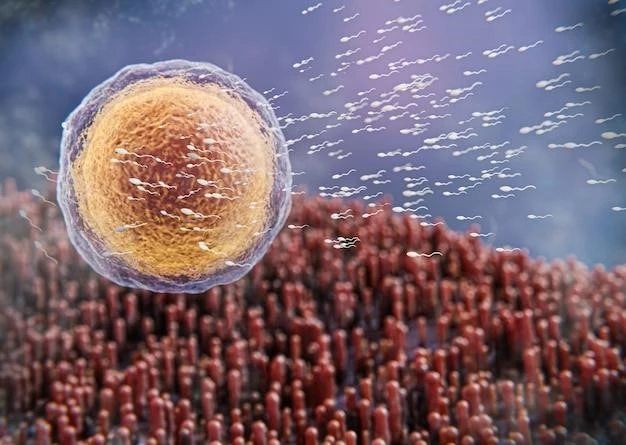Understanding Lentiginosis in the Context of Neurofibromatosis
Lentiginoses are often associated with Neurofibromatosis due to pigment-producing cells. If you suspect any skin lesions, genetic mutations, or pigmentation abnormalities, seek a dermatologist for diagnosis. Track your medical history for early detection of tumor development.
Introduction
Welcome to our comprehensive guide on understanding Lentiginosis in the context of Neurofibromatosis (NF). Lentigines, commonly known as ″liver spots″ or ″age spots,″ are skin pigmentation abnormalities that can be linked to NF, a genetic disorder causing tumor development. This article aims to shed light on the relationship between Lentiginosis and NF, detailing the role of genetic mutations, the significance of cafe-au-lait spots, and the importance of seeking early diagnosis from a dermatologist. By exploring skin lesions in NF and the impact of pigmentation abnormalities, we hope to provide valuable insights for individuals navigating these conditions. Stay informed, stay vigilant, and empower yourself with knowledge to promote early detection and effective treatment strategies. Let’s delve into the complexities of Lentiginosis in the context of NF together.
What are Lentigines?
Lentigines, also known as lentigos, are benign skin lesions characterized by localized areas of increased pigmentation. These spots can vary in color from light brown to black and are often associated with sun exposure. In the context of Neurofibromatosis (NF), lentigines may indicate pigment-producing cell abnormalities linked to genetic mutations. It is essential to monitor any changes in the appearance of lentigines, especially concerning the development of multiple spots or alterations in shape and size. While lentigines themselves are typically harmless, their presence in individuals with NF may warrant closer attention due to the increased risk of tumor development. If you notice any new or changing skin spots, consult a dermatologist for a thorough evaluation to rule out any underlying issues. Understanding the nature of lentigines and their potential significance in the context of NF can help individuals proactively manage their skin health and overall well-being.
Neurofibromatosis (NF)
Neurofibromatosis (NF) encompasses a group of genetic disorders that cause tumors to grow on nerves. These tumors can develop anywhere in the nervous system, including the skin, leading to various manifestations such as cafe-au-lait spots, skin neurofibromas, and optic nerve gliomas. NF is classified into three types, with NF1 being the most common and often associated with skin findings like lentigines. Individuals with NF may experience a range of symptoms beyond skin lesions, affecting different organ systems. Genetic mutations play a crucial role in NF, with around half of cases resulting from spontaneous mutations. Early diagnosis and regular monitoring by dermatologists and other healthcare providers are essential for managing NF-related complications and addressing any pigmentation abnormalities. By understanding the complexities of NF and its potential impact on skin health, individuals can take proactive steps towards early detection and personalized treatment strategies.
Understanding Cafe-au-Lait Spots
Cafe-au-lait spots are common pigmented skin lesions characterized by flat patches that vary in color from light brown to dark brown. In the context of Neurofibromatosis (NF), these spots are often early markers of the condition, particularly in NF1. Cafe-au-lait spots result from an excess production of melanin in the skin and can vary in size and shape. While cafe-au-lait spots can be benign on their own, their presence in individuals with NF may signify an underlying genetic mutation that predisposes them to tumor development. Monitoring the number, size, and distribution of cafe-au-lait spots is crucial for assessing disease progression and potential complications. If you notice an increase in the number of spots or any changes in their appearance, promptly consult with a dermatologist for a comprehensive evaluation and personalized care plan. Understanding the significance of cafe-au-lait spots in the context of NF can empower individuals to proactively manage their skin health and overall well-being.
Skin Lesions in Neurofibromatosis
Neurofibromatosis (NF) is characterized by various skin lesions that can range from cafe-au-lait spots to neurofibromas. Cafe-au-lait spots are flat, pigmented patches, while neurofibromas are benign tumors that develop on nerves. These skin manifestations can vary in appearance and may change over time. Individuals with NF should pay close attention to any new or evolving skin lesions, as they can indicate disease progression or potential complications. Regular skin checks and monitoring by a dermatologist are essential to detect any changes early and ensure prompt intervention. Understanding the types of skin lesions associated with NF, their characteristics, and the importance of monitoring them can empower individuals to take proactive steps in managing their skin health and overall well-being.
Genetic Mutation and Pigmentation Abnormalities
Genetic mutations play a significant role in the development of pigmentation abnormalities in the context of Neurofibromatosis (NF). Mutations in specific genes can lead to an overproduction of melanin, resulting in conditions like lentigines and cafe-au-lait spots. These pigmentation abnormalities are often early signs of NF and can help healthcare providers in diagnosing the condition. Understanding the genetic basis of pigmentation changes can aid in targeted treatment approaches and personalized care plans for individuals with NF. It is crucial to have genetic testing and counseling to identify potential mutations and assess the risk of associated complications. By staying informed about the genetic aspects of pigmentation abnormalities in NF, individuals can actively participate in their healthcare decisions and navigate the management of their condition effectively.
Seeking Diagnosis from a Dermatologist
When faced with skin lesions such as lentigines or cafe-au-lait spots in the context of Neurofibromatosis (NF), seeking timely diagnosis from a dermatologist is crucial. Dermatologists specialize in identifying and evaluating various skin conditions, including those associated with genetic disorders like NF. Through a thorough examination and potentially further tests, a dermatologist can provide an accurate diagnosis and recommend appropriate treatment options. Early detection of NF-related skin manifestations can lead to timely interventions and better disease management. Individuals concerned about pigmentation abnormalities or skin lesions should not hesitate to schedule an appointment with a dermatologist for a comprehensive assessment. By collaborating with a dermatologist, individuals can gain valuable insights into their skin health, receive tailored recommendations, and proactively address any potential concerns related to NF and associated skin changes.

Early Detection and Treatment
Early detection of skin lesions like lentigines and cafe-au-lait spots in individuals with Neurofibromatosis (NF) is key to effective treatment and management. Regular skin checks, self-examinations, and prompt evaluation of any changes are vital in monitoring NF-related pigmentation abnormalities. Timely intervention can help address potential complications, provide symptom relief, and improve overall quality of life for individuals with NF. Treatment options may vary depending on the severity of skin lesions and associated symptoms. Dermatologists and healthcare providers can offer personalized treatment plans tailored to individual needs, which may include topical therapies, laser treatments, or surgical interventions. By prioritizing early detection and seeking timely treatment, individuals can take proactive steps in managing NF-related skin changes and optimizing their long-term skin health and well-being.
Monitoring Through Medical History
Tracking your medical history plays a vital role in the comprehensive management of Neurofibromatosis (NF) and associated skin manifestations like lentigines. Keeping detailed records of skin changes, diagnostic tests, treatments, and healthcare provider consultations can provide valuable insights into disease progression and treatment outcomes. Regularly updating your medical history allows healthcare providers to monitor trends, identify potential risks, and make informed decisions about your care. Additionally, sharing your medical history with specialists such as dermatologists ensures continuity of care and enables them to tailor their approach to your specific needs. By actively participating in the monitoring of your medical history, you empower yourself in the management of NF-related pigmentation abnormalities and promote effective communication with your healthcare team for optimal treatment outcomes.
Support and Resources for Patients
For individuals navigating Neurofibromatosis (NF) and its associated skin manifestations like lentigines, accessing support and resources is essential. Joining patient support groups, online forums, or seeking guidance from patient advocacy organizations can provide valuable emotional support, share experiences, and offer practical tips for managing NF-related challenges. These platforms also serve as valuable resources for accessing information on the latest treatments, research advances, and healthcare providers specializing in NF care. In addition, connecting with mental health professionals and genetic counselors can help address the emotional impact of living with NF and assist in making informed decisions about treatment options. Remember, you are not alone in your journey with NF—seeking support and leveraging available resources can help you feel empowered, informed, and better equipped to navigate the complexities of the condition.
Conclusion
In conclusion, understanding Lentiginosis in the context of Neurofibromatosis (NF) is essential for individuals navigating this complex genetic disorder. By recognizing the significance of skin lesions like cafe-au-lait spots, monitoring for pigmentation abnormalities, and seeking early diagnosis from dermatologists, individuals can take proactive steps towards managing NF-related skin changes and potential complications. Maintaining regular skin checks, tracking medical history, and accessing support networks can empower individuals to advocate for their health and well-being. Remember, early detection, personalized treatment, and a multidisciplinary approach involving healthcare providers, support groups, and resources are key in effectively managing NF and promoting overall skin health. Stay informed, stay engaged, and prioritize your skin health journey. Together, we can work towards better outcomes and improved quality of life for individuals impacted by NF and associated skin manifestations.
